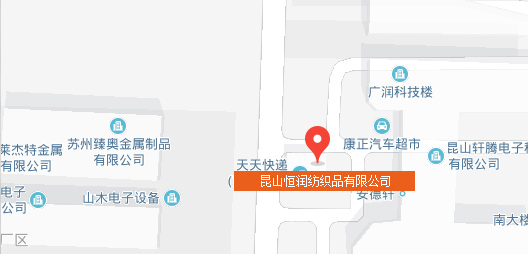Xinjiang textile and apparel industry
Whether at the forum or the meeting, Liang Yong, deputy secretary-general of the People's Government of the autonomous region and director of the Office of the Leading Group for Employment Promotion of the Development of the Textile and Clothing Industry in the Autonomous Region, is struggling to "shout", promote Xinjiang's advantages, talk about Xinjiang's textile prospects, and promote industry Production capacity layout is carried out along the economic belt along the route. People have seen Damei Xinjiang, and even more, this agricultural region has a strong desire for the development of the textile and apparel industry.
Liang Yong said that Xinjiang's textile and apparel industry, as a traditional industry and an important civilian production industry, covers a wide range. The textile and apparel industry is very labor-intensive, and it has played a huge role in absorbing employment, improving people's livelihood, and promoting social harmony. Judging from the characteristics of the textile and apparel industry, the development of the textile and apparel industry can not only achieve the employment of the surplus labor force in our area, but also promote the common development of a series of related industrial economies.
In 2014, the second Central Xinjiang Work Symposium proposed to vigorously promote the development of Xinjiang's textile and apparel industry to drive employment. With the joint efforts of all parties, a new economic development strategy began to be launched in Xinjiang: accelerate the development of the textile and apparel industry, and take a new path to promote employment and economic and social development.
In 2014, the autonomous region implemented the strategy of developing the textile and apparel industry to promote employment, textile and apparel freight subsidies, use of Xinjiang cotton subsidies, corporate social security subsidies, printing and dyeing wastewater treatment facility construction subsidies ... A series of preferential policies have made the mainland textile and apparel industry set off to Xinjiang The upsurge of transfer has accelerated the development of Xinjiang's textile and apparel industry.
Under the strong support of the state and the strong promotion of the party committee and people's government of the autonomous region, Xinjiang's textile and apparel industry has achieved remarkable results over the past three years. Xinjiang has gradually become the hottest place in the national textile and apparel industry.
Open the Xinjiang textile and apparel industry report card, you can see a set of dazzling data:
In 2014, the investment in fixed assets of the textile and apparel industry in Xinjiang reached 9.615 billion yuan, an increase of 76.1% from the previous year and an increase of 58.9% from the highest in history in 2011.
In 2015, the investment in fixed assets of the textile and apparel industry in Xinjiang reached 31.79 billion yuan, an increase of 230.6% over the previous year.
In 2016, the region's textile and apparel industry fixed assets investment was 47.97 billion yuan, an increase of 50.9% over the same period last year.
As Liang Yong, who has worked hard in the textile and apparel industry for a long time, summarized: In the past three years, the investment in fixed assets of the textile and apparel industry in Xinjiang has exceeded the total investment in fixed assets in the textile and apparel industry in the 35 years since the reform and opening up in Xinjiang.
Standing on the threshold of "have achieved excellent results", the party committee and people's government of the autonomous region once again proposed new goals. In 2017, the Xinjiang textile and apparel industry must complete a fixed asset investment of not less than 72 billion yuan, and achieve 100,000 new jobs. To achieve an increase in industrial added value of more than 40%.
This is a strategic deployment of "urgent catching up". According to this deployment, by 2023, Xinjiang will become China's largest cotton textile industry base and the most important clothing export base in western China. The output value of the entire industry is expected to increase from 30 billion yuan in 2014 to 400 billion yuan in 2023.
Imagination of a textile city
On September 11, in the production workshop of Bazhou Jinfu Special Yarn Industry Co., Ltd. (hereinafter referred to as "Bazhou Jinfu Special Yarn Industry"), 50 air-jet spinning machines were being produced with full horsepower, and one plate was made of viscose. The spindles made of fiber are neatly laid in the workshop. The viscose yarn produced by this enterprise has become the most advantageous yarn in the Korla Textile and Garment City, and is sold well both at home and abroad.
The company's chief production engineer Lu Bo introduced that the reason why Bazhou Jinfu Special Yarn Industry was landed in Korla Economic and Technological Development Zone was not only attracted by a series of preferential policies, but also because the products of Xinjiang Fulida Company could be supplied to the enterprise on the spot Enterprise production improves efficiency and reduces transportation costs. At present, Bazhou Jinfu Special Yarn Industry has put into operation 200 air-jet spinning machines, which require more than 300,000 tons of viscose staple fiber every year. With the subsequent projects in succession, Bazhou Jinfu Special Yarn Industry will need to use Xinjiang Fulida's Multiple products. While the two companies are growing synchronously, the processing and upgrading of their products can also be completed in the park.



